Books and art Edited March 13th / A Greek translation is also available
“With the correct kind of conditioning, you can start dreading its [a flower’s] sight and smell. English novelist Aldous Huxley vividly portrays this concept in his novel Brave New World (1932). In the story eight-month-old babies are conditioned to be afraid of books and rose petals.” Miguel Farias and Catherine Wikholm
“I tell you what freedom is to me: no fear.” Nina Simone
Today’s post includes four drawings from me inspired by life, children’s literature, Nina Simone’s music, Anton Chekhov‘s well known play, The Seagull, and Aldous Huxley’s cautionary tale, Brave New World. I’ve also included two books for children related to racism and diversity, and also other important themes like injustice, inclusion, friendship and loyalty, and how stories can bring people or animals, in this case, together.
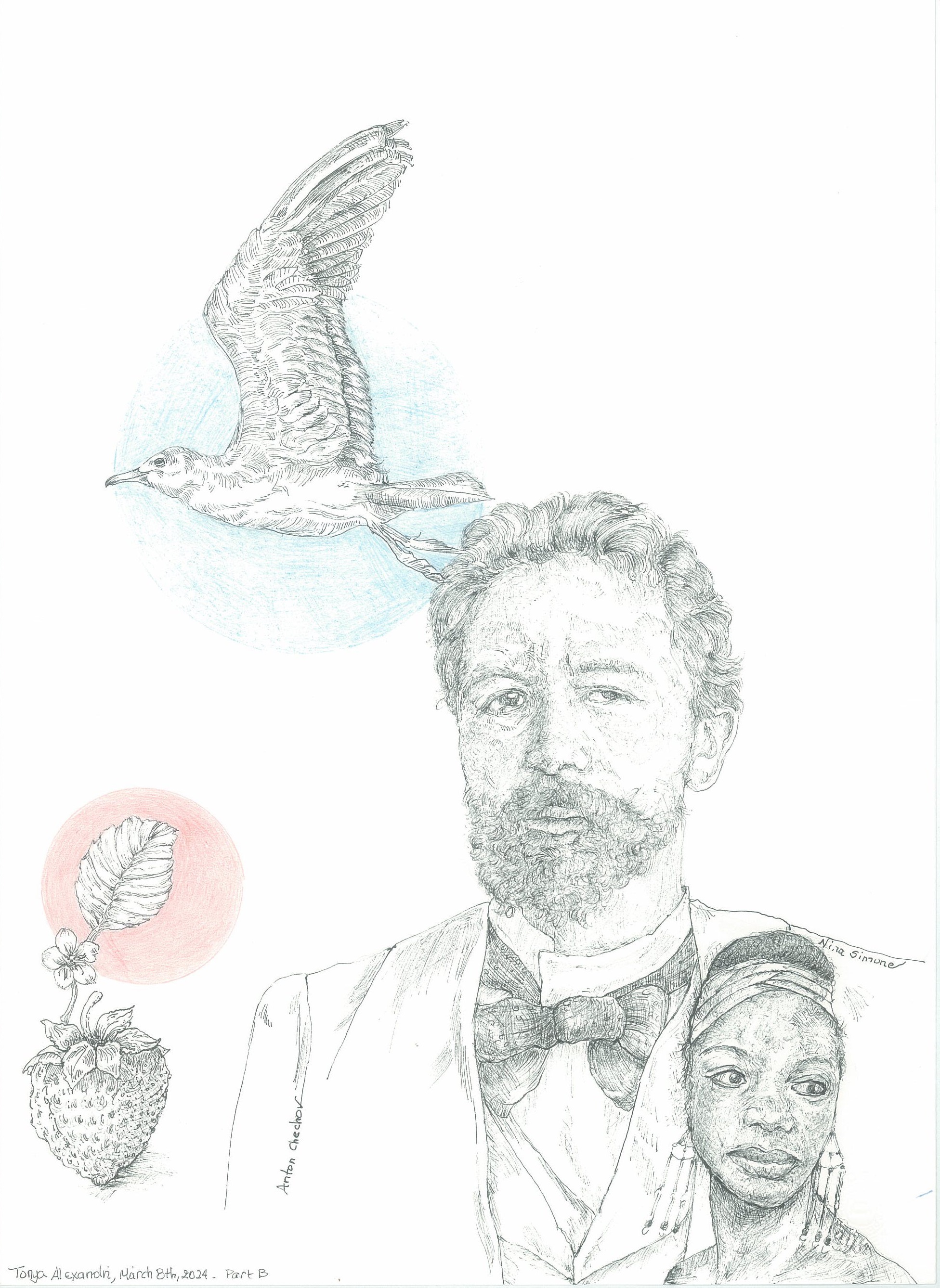
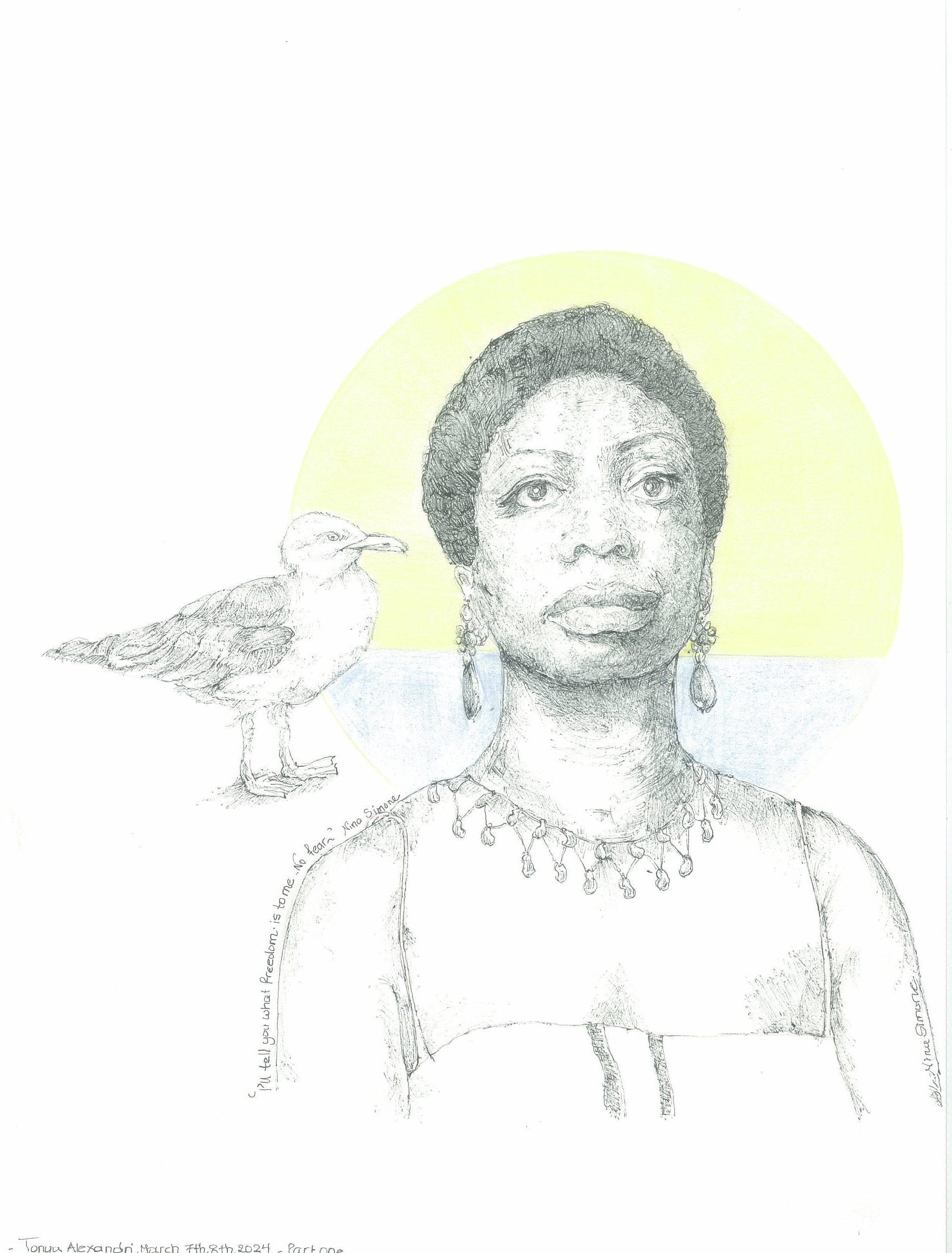
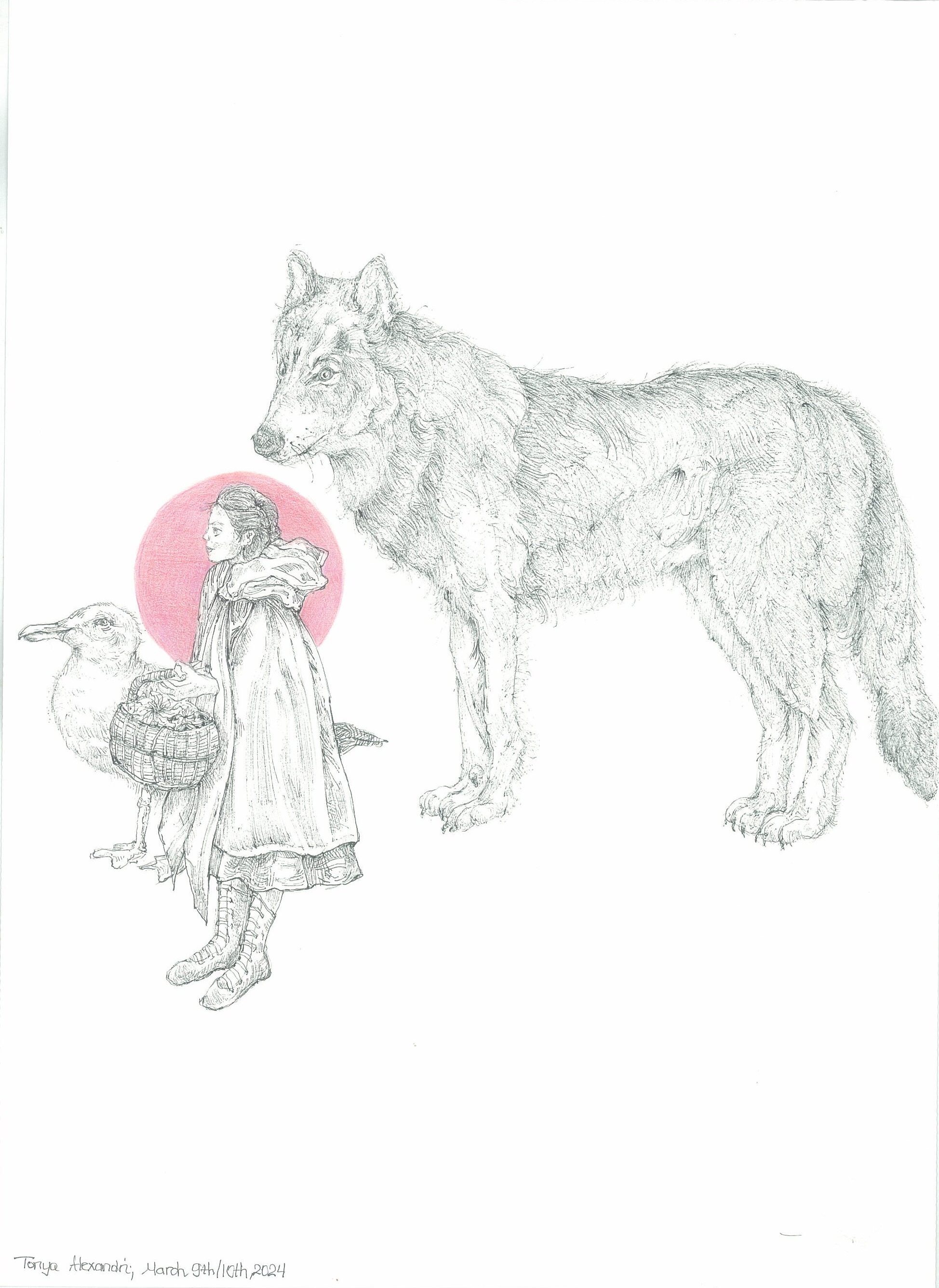
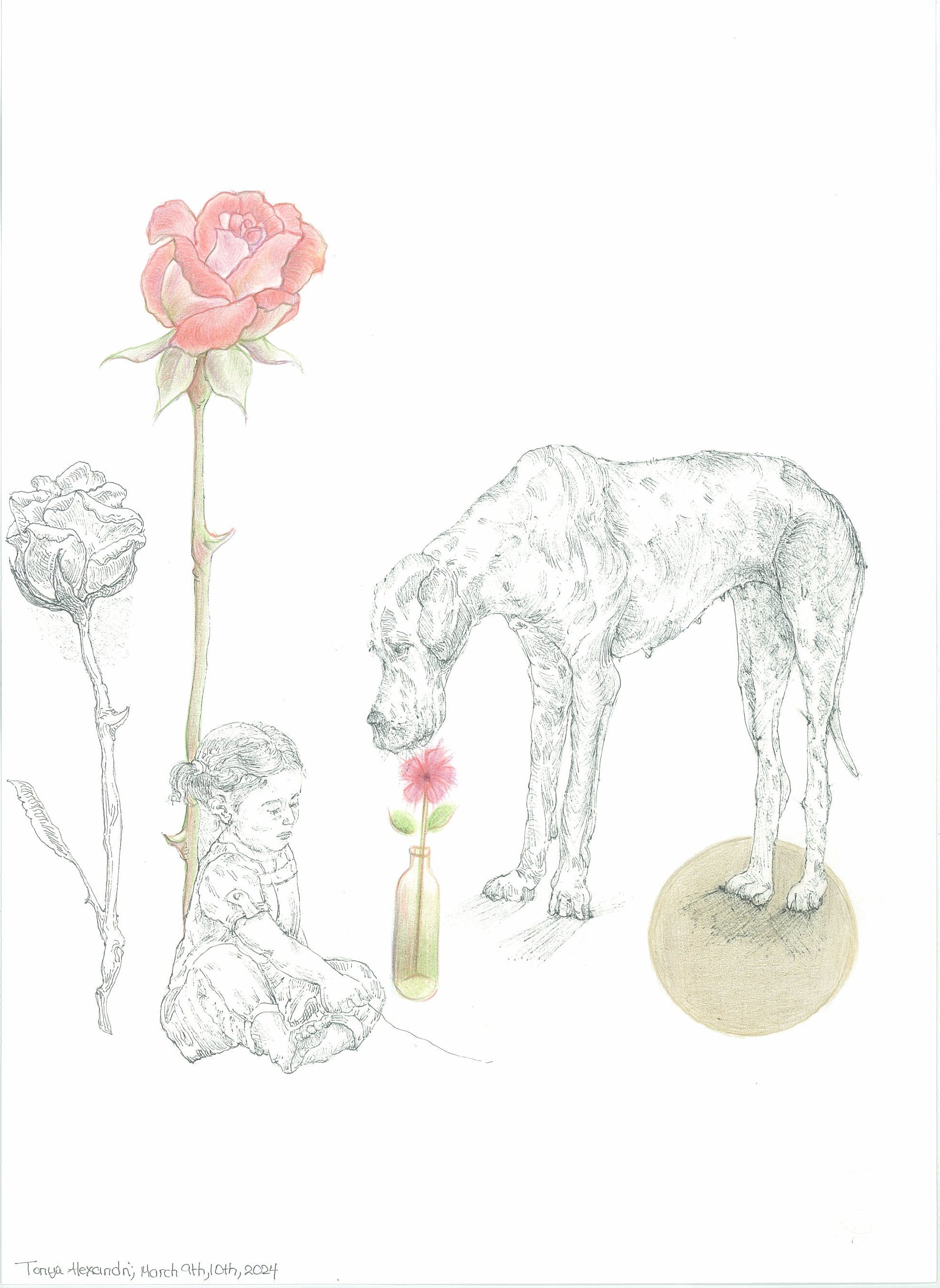
Huxley’s book, Brave New World, presents a futuristic society engineered meticulously, in which everyone is comfortable, compliant and content, at least at first glance. In Huxley’s book, unlike Orwell’s 1984, technological progress does not lead to mass surveillance and oppression. Instead, Huxley paints a future in which “everyone is happy now,” mostly thanks to drugs and frequent non committal sex. Babies are produced in factories, grouped into social classes or castes, A, B, C, D, Es [there’s even a relevant rhyme: A,B,C,Vitamin D], and conditioned heavily from their first day to fear all kinds of things like books and flowers, and as they get older to love their roles and place in the world not to question, to consume and to take soma pills to disperse any “negative” emotions or thoughts. However, all this surface peace is disrupted when John, a young white man who reads and recites Shakespeare and has grown up outside their world with Native Americans and whom they call “Savage,” and his middle-aged mother, a prior citizen of the brave new world, enter the picture. The first cracks in this meticulously engineered societal structure occur.
Although written in 1932, Huxley’s dystopia, Brave New World, feels very relevant, and one could say is a political critique and satirization of a society where privacy, individuality, strong emotions, free thinking, thinking about the past and future, parenthood, old age, and many other things are highly discouraged or forbidden, and where citizens resemble cheerful robots drowning in gleeful ignorance. As a tool of social control when citizens experience strong negative emotions or certain kinds of thoughts, they are encouraged to use a freely distributed drug called soma that creates pleasant hallucinations and a sense of timelessness. They take a soma “holiday” to distract themselves and to experience pleasure.
In relation to art in Aldοus Huxley’s book citizens are deprived of art in an effort to maintain a form of drugged contentment, suggesting that art leads to social instability and unrest. Mustapha, the chief controller with the deep voice, believes that a societal structure that creates art and literature is dangerous. He says: “you can’t make tragedies without social instability. The world’s stable now. People are happy; they get what they want, and they never want what they can’t get.” He also explains that people would be unlikely to appreciate art, anyway because brainwashing has successfully alienated them from the human experiences, such as death, love, and pain that art can reveal or express. Also, art has the potential to enlighten people about their oppression, and cause them to feel dissatisfaction, which is bad for production, and furthermore, if the citizens were sensitized to their humanity, and inspired to question the meaning of their existence or the way things operate, then this brave new world would cease to exist in its current form. Mustapha asserts that “Universal happiness keeps the wheels steadily turning; truth and beauty can’t….”
As I was considering this post I was thinking about how we each bring our own subjectivity, ideas, personality and experience as we engage with art products and stories of various sorts created by others. I’ll expand a bit by using an example of a painting I came across by an old acquaintance artist, while I was searching for something online. Considering the unusual experience I had today, involving a young cock or maybe hen, it was not surprising that I was reminded of this particular piece of art.
The weather was lovely this morning and I thought it would be great to walk to town. As I had emptied our waste paper baskets I took the rubbish with me and dropped it into the first bin on my way to town, and then I heard a sound that resembled a hen. And sure enough a bird was at the bottom of the container trapped under the light bag I had thrown in. It was making sounds of distress because it could not free itself from under the thing that had landed on it, and I could reach neither the bird nor the bag. Then I caught sight of a young man in a car parked a few metres away. I asked him to help me free the bird and he willingly came to the rescue. Together we tipped the container and he reached inside and freed the young bird that seemed dazed, picked it up and left it in the field next to the road. So, that ended well and hopefully the little cock or hen is okay now.
As I sat to write this post and with the morning event on my mind it was almost inevitable that this particular painting would come to mind. It is a self-portrait of the artist in grey tones mostly and the word KOTA is written in big black bold letters at the top of the head and the canvas. KOTA in Greek means hen, chicken, but in slang it can mean several things like coward or slow driver, and when referring to women mostly, things like frivolous or stupid or worse. Maybe there are other meanings in slang that elude me. In any case, as I mentioned above, the experience and meaning making of a particular piece of art is person dependent to a great extent. When I saw the painting I wondered whether the artist was recreating or processing a private experience or whether he was making an accusation, challenging the audience to feel a certain way, think or consider something. We may never know what the artist had in mind and that’s fine, because what is important is what we the audience make of it, and what has arisen in us. When we come into contact with an object or process of art it becomes, at least momentarily, a part of us. We get the chance to think, to feel sensations or emotions, to free-associate if we choose. We may compare, remember, meditate on, consider its symbolism or implicit message, treasure it or let go of it, but art stays with us for a little while.
Two illustrated books for children:
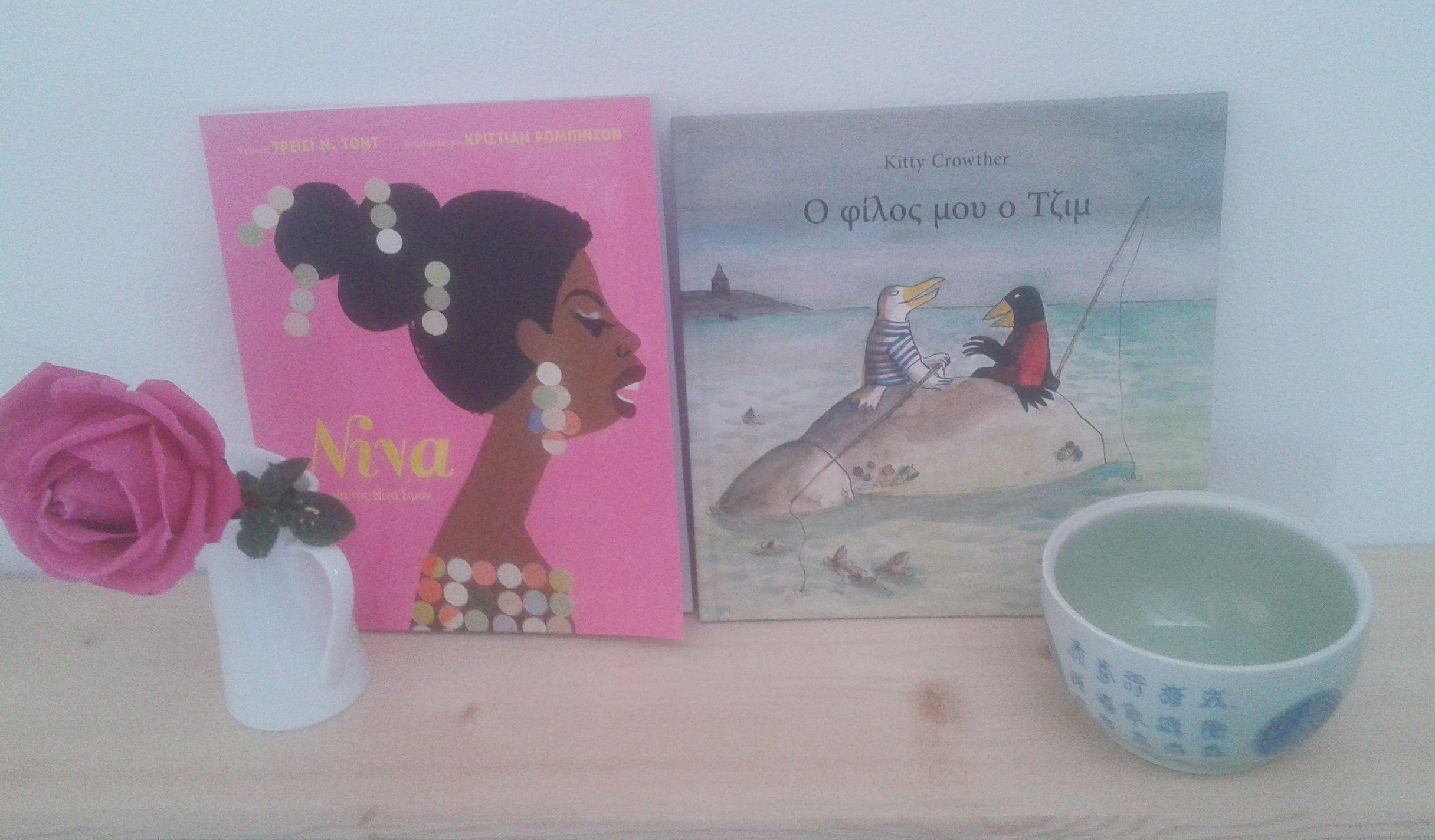
Jack and Jim by Kitty Crowther for younger children
Jack, a forest blackbird yearns to explore the ocean. He ventures to the beach where he meets Jim, a white-feathered seagull. They become friends and Jim invites Jack to his home and village, but Jack grows uncomfortable at the other gulls’ hostility and feels sad because they don’t seem to like or accept him. However, Jim remains loyal to Jack, who ultimately gains acceptance by demonstrating a skill that the seagulls lack: an ability to read. His story reading unites them beyond their differences.
NINA: A Story of Nina Simone written by Traci Todd and illustrated by Christian Robinson for children and teenagers
It is a picture book biography of Nina Simone born Eunice Waymon in rural North Carolina in 1933. Nina was a child prodigy, pianist, singer, and composer. With the support of her family and community, she received music lessons that introduced her to classical composers like Bach, who influenced her music throughout her life. After high school she left North Carolina for New York and Juilliard. After several disappointments and indignities she began performing at a nightclub and her growing fame led her to change her name to Nina Simone to hide her “unholy” music from her mother. Meanwhile, the momentum of the ongoing civil rights movement proved impossible to ignore. Nina felt internal and external pressure to speak out against racism. Todd ends her story with the sentence: “And when she sang of Black children — you lovely, precious dreams — her voice sounded like hope.”
